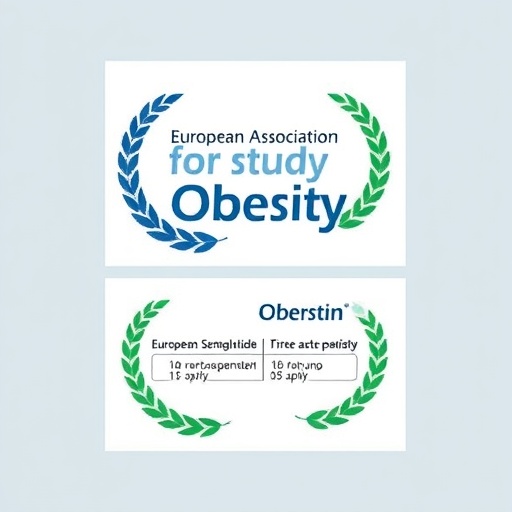Groundbreaking Framework Endorses Semaglutide and Tirzepatide as Primary Pharmacological Treatments for Obesity and Its Complications
In a transformative development within obesity management, the European Association for the Study of Obesity (EASO) has unveiled a comprehensive new framework advocating for semaglutide and tirzepatide as the foremost pharmacological interventions for individuals grappling with obesity and its myriad complications. Published in the prestigious journal Nature Medicine, this rigorous algorithm, led by eminent obesity experts including Dr. Andreea Ciudin and Professor Barbara McGowan, promises to redefine therapeutic strategies by prioritizing efficacy and complication-specific outcomes.
This innovative framework emerges against a backdrop of expanding pharmacotherapy options targeting obesity, a multifactorial disease characterized by excessive adiposity and systemic metabolic disruptions. Recent years have witnessed an encouraging proliferation of novel agents, each possessing unique mechanisms of action. Yet, this diversity necessitates a structured approach to tailor treatments sparingly according to individual patient profiles, encompassing both weight reduction goals and obesity-associated pathologies.
Central to the EASO algorithm is a pioneering emphasis on the presence or absence of obesity-related complications as the pivotal determinant guiding medication selection. Dr. Ciudin, a co-first author, highlights that although multiple drugs are commercially available, semaglutide—a glucagon-like peptide-1 receptor agonist—and tirzepatide—a dual agonist targeting both gastric inhibitory polypeptide and GLP-1 receptors—demonstrate unrivaled efficacy profiles that justify their primacy across diverse clinical scenarios. This decisively shifts therapeutic paradigms from a one-size-fits-all model to a nuanced, evidence-driven practice.
The dual receptor agonist tirzepatide and the GLP-1 receptor agonist semaglutide have amassed robust evidence from randomized controlled trials and comprehensive meta-analyses, demonstrating profound, sustained total body weight reduction. The algorithm unequivocally endorses these agents when substantial weight loss is clinically warranted. Conversely, for moderate weight loss objectives, agents such as liraglutide, naltrexone–bupropion, and phentermine-topiramate retain therapeutic relevance, underscoring the importance of graduated treatment intensities.
The framework also introduces a dichotomous classification of obesity-related complications into “fat mass disease” and “sick fat disease,” distinguishing mechanically driven sequelae from immunometabolic dysfunctions. This mechanistic interpretation facilitates a tailored therapeutic lens. In fat mass disease, exemplified by obstructive sleep apnea (OSA) and knee osteoarthritis, tirzepatide and semaglutide are respectively recommended as first-line pharmacotherapies based on emerging but compelling trial data. Notably, semaglutide demonstrates superior efficacy in ameliorating osteoarthritis-related pain, a pivotal benefit beyond mere adiposity reduction.
In the realm of sick fat disease, which encapsulates metabolic and cardiovascular complications linked to adipose tissue inflammation and dysfunction, tirzepatide and semaglutide again dominate first-line recommendations. Their efficacy extends to crucial conditions such as prediabetes and type 2 diabetes, where these agents not only promote weight loss but also improve glycemic control, thereby addressing root pathophysiological mechanisms. Additionally, in cardiovascular disease contexts, semaglutide’s capacity to significantly reduce major adverse cardiovascular events (MACE) after prior incidents substantiates its preferential use.
Cardiometabolic complexities like heart failure, although under-explored pharmacologically, are also addressed within this framework. Preliminary data advocate for the consideration of either tirzepatide or semaglutide, pending further evidence. Furthermore, metabolic dysfunction-associated steatotic liver disease (MASH), a progressive condition contributing to hepatic fibrosis, responds favorably to tirzepatide, with semaglutide’s efficacy recently corroborated in phase 3 trials such as the ESSENCE study. These developments foreshadow imminent updates to the treatment algorithm incorporating semaglutide as a co-first line agent for MASH.
The authors conscientiously acknowledge profound economic and healthcare policy implications presented by these advanced incretin-based therapies. Though their costs can pose barriers within varied national frameworks, the argument is posited that early intervention to mitigate obesity and adipose tissue dysfunction is vital to circumvent the expensive sequelae of advanced complications and organ damage. Thus, holistic healthcare evaluations must integrate the long-term cost-effectiveness of early pharmacological treatment alongside immediate economic considerations.
Despite the compelling clinical data driving this new algorithm, the authors emphasize existing limitations, noting that many medications have yet to be extensively evaluated across the full spectrum of obesity-related complications. While weight loss is a validated surrogate endpoint for improvement in many conditions, direct evidence delineating specific therapeutic effects across complications such as chronic kidney disease, neurodegenerative illnesses, certain malignancies, polycystic ovary syndrome, and mental health remains emergent. This recognition underscores the dynamism and evolving nature of obesity pharmacotherapy research.
Professor Barbara McGowan underscores the complexity inherent in individualizing obesity treatment, advocating a comprehensive assessment framework that integrates adiposity severity, presence and extent of comorbidities, concurrent pharmacotherapies, as well as personal and socioeconomic factors. This patient-centric approach aims to harmonize clinical efficacy with patient values and expectations, fostering adherence and holistic outcomes in real-world settings.
Dr. Andreea Ciudin highlights the transformative impact of next-generation incretin therapies, describing the burgeoning class of GLP-1 receptor agonists and dual GIP/GLP-1 receptor agonists as a revolution in obesity and complication management. She cautions that while this algorithm provides structured guidance, it is not a substitute for the nuanced clinical judgment necessary to navigate the heterogeneity of patient presentations and therapeutic responses.
Concluding with a forward-looking vision, EASO President Professor Volkan Yumuk commits to iterative revisions of this pharmacological framework, reflecting the rapid advances and accumulating evidence in the obesity treatment landscape. This commitment ensures that clinicians will have access to the most up-to-date, evidence-informed guidance for navigating the complexities of obesity pharmacotherapy.
As obesity continues to exert a staggering global health burden, this pioneering framework heralds a new era in which potent, mechanistically targeted therapies like semaglutide and tirzepatide ascend as foundational pillars of clinical care. Their integration promises not only profound weight loss but also meaningful mitigation of the multifaceted complications that render obesity a formidable clinical challenge.
Subject of Research: Pharmacological treatment strategies for obesity and obesity-related complications.
Article Title: Framework for the pharmacological treatment of obesity and its complications from the European Association for the Study of Obesity (EASO).
News Publication Date: 2 October 2025.
Web References: Not provided.
References: Clinical trials and meta-analyses detailed in the EASO publication, including the ESSENCE trial.
Image Credits: Not available.
Keywords: Semaglutide, Tirzepatide, Obesity pharmacotherapy, GLP-1 agonists, GIP/GLP-1 dual agonists, Obesity complications, Fat mass disease, Sick fat disease, Weight loss, EASO treatment algorithm, Metabolic dysfunction, Cardiovascular disease.




